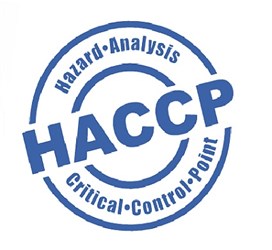5 Reasons To Include Chemical Labeling In HACCP Plans
By Laurel Maloy, contributing writer, Food Online

Often overlooked, but regularly observed by food-safety auditors, labeling chemicals is essential to food safety and are a necessary part of any HACCP plan
The issue of unlabeled chemicals in food-processing facilities is a two-fold hazard. Not only can it get your firm in trouble with the Occupational Safety and Health Administration (OSHA), it can land your company in hot water with the Food Safety and Inspection Service (FSIS). Generally speaking, the undivided attention of two government agencies isn’t sought after in food manufacturing.
The most-recent examples of chemical poisoning occurred in restaurants — one in a South Jordan, UT BBQ restaurant, Dickey’s Barbecue Pit, and one from an unidentified restaurant in Dallas County, TX. In both instances, the chemical, mistakenly thought to be sugar, was introduced into iced tea. While these examples occurred in restaurants, food processors and manufacturers should take note of these cautionary tales and exercise due diligence in the prevention of food-safety events caused by mislabeled or non-labeled chemicals.
The five most-common results of inadequate chemical labeling are:
- Unlabeled chemicals could be mixed with or sprayed directly onto food in error; drifting chemical dust or spray can come in contact with food if used in close proximity
- Unlabeled chemicals can be mistaken for food additives or ingredients, and accidentally added to your product
- Unlabeled chemicals can result in the wrong chemical being used for the wrong purpose, meaning that cleaning is not accomplished properly, thereby resulting in pathogen-tainted product
- Unlabeled chemicals could cause two different chemicals to be inadvertently combined with disastrous consequences, up to and including an explosion or poison gas release
- Unlabeled chemicals cannot be traced back to their origin, making it extremely hard, if not impossible, and potentially expensive to identify a chemical in the case of an incident
Some of the areas you will want to check for unlabeled chemical containers are indoor and outdoor storage areas, maintenance rooms or sheds, and all cupboards, cabinets, and lockers. You will also want to check over and under every area of the production floor, as well as the bathrooms, employee break rooms, showers, and hand or eye-washing stations. Once you’ve discovered unlabeled chemical containers, determine how it got where it is and why it isn’t labeled properly. Question the relevant management and staff, and then devise a plan to keep it from happening in the future. The most-common reason is because chemicals are dispensed from bulk containers into whatever happens to be handy with a tool for labeling not being readily available. Inadequate training also contributes to an employee’s lack of understanding concerning the dangers involved with chemical use.
Related: Management Commitment — The Key For Training QA Managers
Your firm’s plan may include putting chemicals under lock and key in a clearly identified area or providing pre-printed chemical bottles and containers. One consideration may be to delegate a person(s) responsible for overseeing the use, labeling, and disposal of chemicals and the associated trappings, such as rags. Workforce training may be necessary, while engaging the workforce to identify and report noncompliance will ensure a safer environment. Guessing is not an option. If an unlabeled chemical cannot be unequivocally identified, dispose of it.
Available resources for information on chemical storage and use in food-processing facilities include:
- The Food Safety Modernization Act (FSMA)
- Current Good Manufacturing Practices (CGMPs)
- Hazard Analysis & Critical Control Points (HACCP)
- The FDA Food Code 2009: Annex 6-Food Processing Criteria
- The USDA National Agricultural Library-FAQ-Regulations, Standards, and Guidelines
- The Electronic Code of Federal Regulations, Title 9, Part 318
Incorporate new procedures regarding chemicals into your HACCP plan as you draft them, including the methods and schedules for monitoring.
